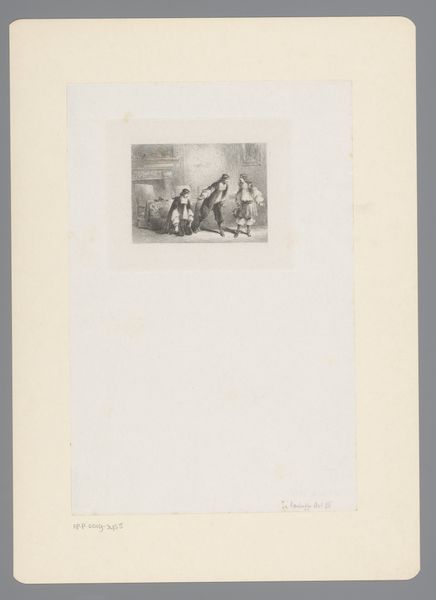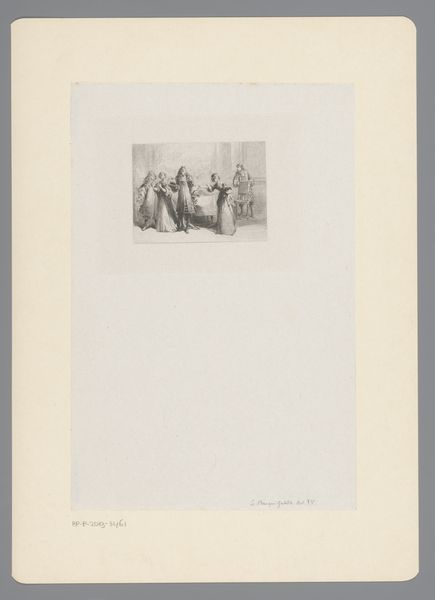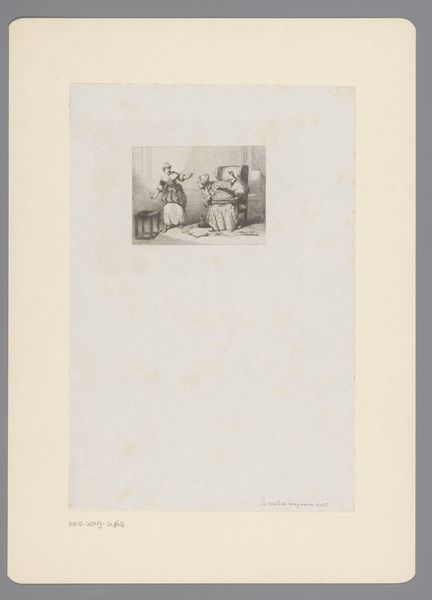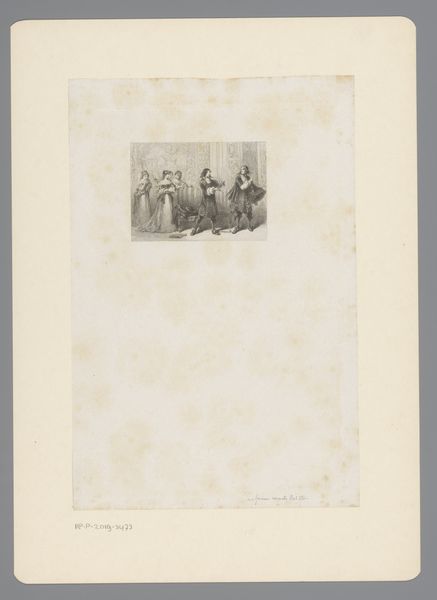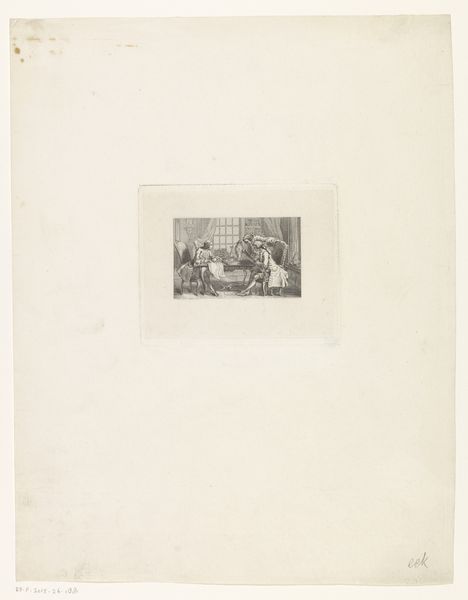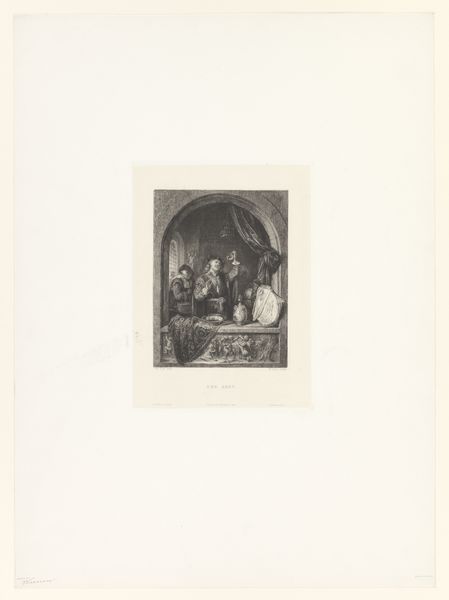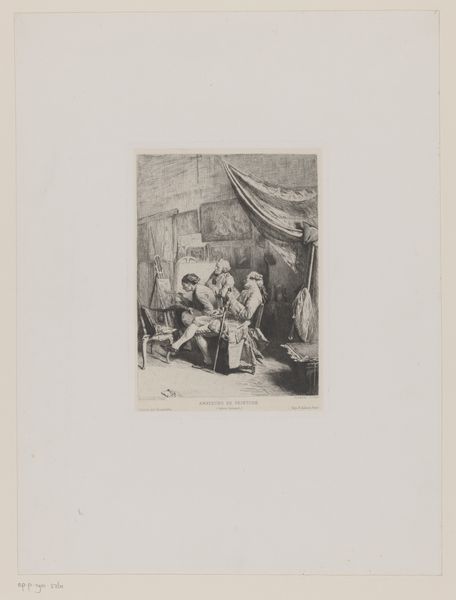
drawing, print, etching, paper
#
portrait
#
drawing
#
16_19th-century
#
narrative-art
# print
#
etching
#
figuration
#
paper
#
line
#
academic-art
Dimensions: height 108 mm, width 142 mm
Copyright: Rijks Museum: Open Domain
Jean-Antoine-Valentin Foulquier made this print called "Harpagon bedreigt Cléante" some time in the 19th century. It shows a scene from Molière's play "The Miser," in which Harpagon threatens his son Cléante over money. Prints like this were common in 19th-century France, a time when theater and literature played a big role in shaping public opinion. Foulquier, as an artist, was part of a larger system that included playwrights, actors, publishers, and audiences. They all contributed to a shared culture. The play itself, written in the 17th century, critiques the bourgeoisie and their obsession with wealth. Foulquier's image captures this tension, visually representing a father-son conflict fueled by greed. The figures are staged dramatically, highlighting the emotional and social dynamics at play. To understand this artwork better, we might dig into the history of French theater, the reception of Molière's plays, and the role of visual art in commenting on social issues. Art is never created in a vacuum; it always reflects and responds to the world around it.
Comments
No comments
Be the first to comment and join the conversation on the ultimate creative platform.
